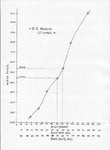peril
Airman
Anyone have a full curve for Merlin 45/46 engines, I need to confirm power under +16lb conditions at various alts below and above FTH.
I have found it hard to find good industry documented data on Merlins, harder than even Japanese planes, why is that? ;(
EG. most info I can find for the Merlin 45 is 1515hp @ 11000ft +16lb, I'd like to see the full picture if I can.
Thanks.
I have found it hard to find good industry documented data on Merlins, harder than even Japanese planes, why is that? ;(
EG. most info I can find for the Merlin 45 is 1515hp @ 11000ft +16lb, I'd like to see the full picture if I can.
Thanks.





